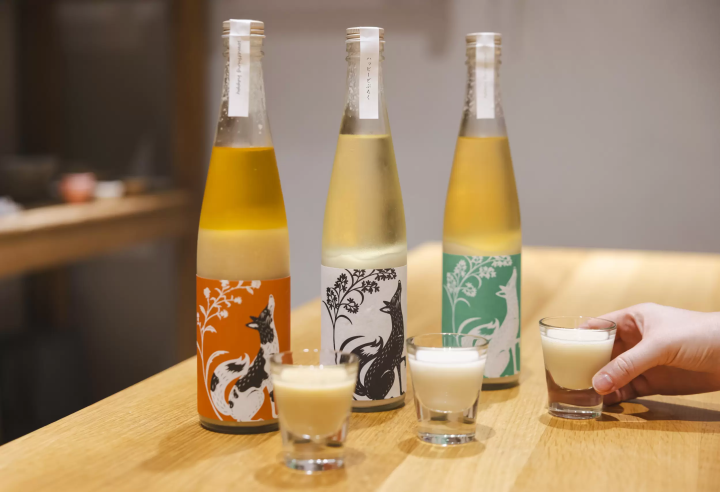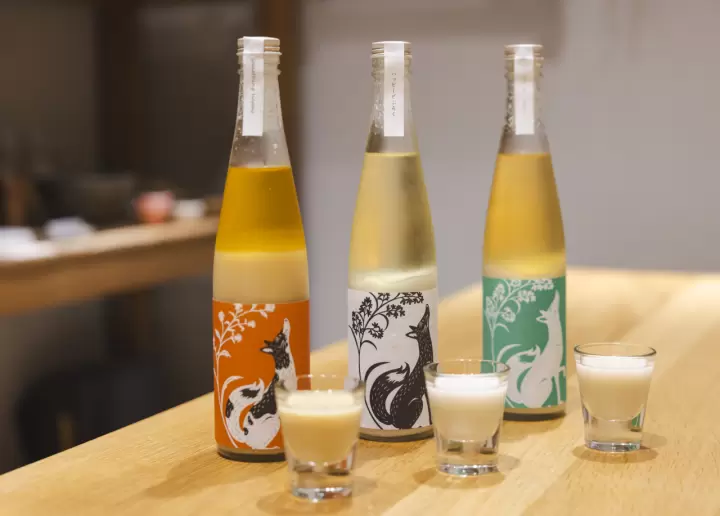Happy Taro Brewery is located within Umi no Schole, a fermentation hub in Nagahama. Here, you can learn about the fermentation process from a brewing specialist and discover the amazing variety of flavors in their craft doburoku.
2025.11.06-
Table of Contents
- The Story of Happy Taro Brewery
- Doburoku, the Rarest Japanese Alcoholic Beverage
- How to Enjoy Your Visit: Brewery Tours and Hands-on Workshops
- Craft Doburoku Varieties to Try at Happy Taro Brewery
- Summary
The Story of Happy Taro Brewery
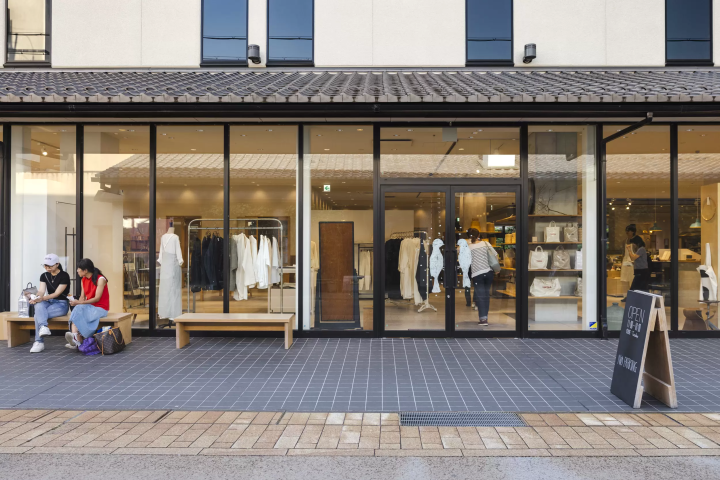
Nagahama, a beautiful city on the eastern shore of Lake Biwa, is home to Umi no Schole, a facility that promotes the local fermentation culture. Opened in December 2021, this complex is located on a lively shotengai (shopping street), directly across from the Nagahama Hikiyama Museum, which showcases the festival floats (hikiyama) used in the city’s most significant local event held every April.
Fermented foods are a cornerstone of the cuisine in the Lake Biwa area. The methods for fermentation are made possible by the high quality of the local water and the wide variety of fish, some of which are unique to this ancient lake.

Umi no Schole was founded to highlight the fermented food culture of Shiga Prefecture. The facility features a gallery and shop where you can find a variety of local products, from durable handcrafted goods to food items.
One of the standout features is the on-site cheese factory, which produces delicious cheese varieties using milk from Shiga. The facility’s cafe offers a perfect opportunity to sample these cheeses, paired with a glass of wine. The cafe menu also includes dishes like curry rice made with sake lees, as well as a selection of desserts.
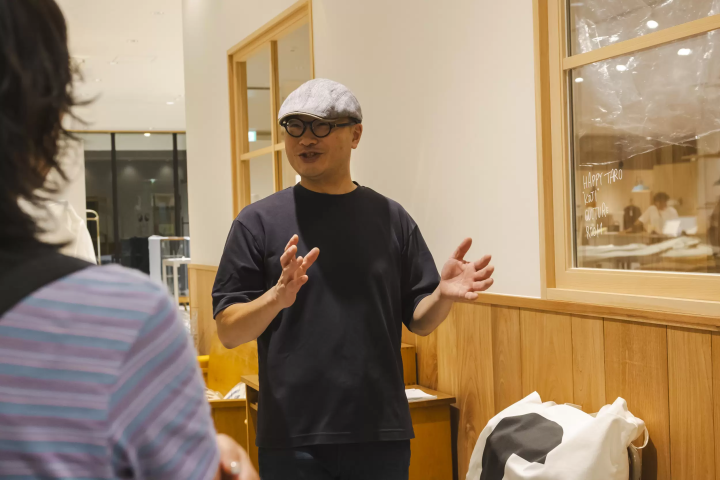
Among the tenants at Umi no Schole is Happy Taro Brewery, which produces a wide range of craft doburoku (unfiltered sake). They also create non-alcoholic amazake and miso paste.
Happy Taro Brewery was founded by Ikejima Kotaro, a master brewer with 12 years of experience in the sake industry. After starting his own business in 2017, he specialized in making koji—rice inoculated with the Aspergillus oryzae mold. Koji is a vital ingredient for creating fermented foods like miso, sake, and amazake.
At the invitation of Mrs. Ishimura Yukiko, the producer of Umi no Schole, Mr. Ikejima obtained his license for making doburoku (unfiltered sake) and launched Happy Taro Brewery in early 2022.
A visit to the brewery offers a wonderful opportunity to deepen your understanding of fermentation, sample incredible varieties of doburoku, and learn more about the unique food culture that has flourished around Lake Biwa—a culture that Umi no Schole so passionately champions.
Doburoku, the Rarest Japanese Alcoholic Beverage
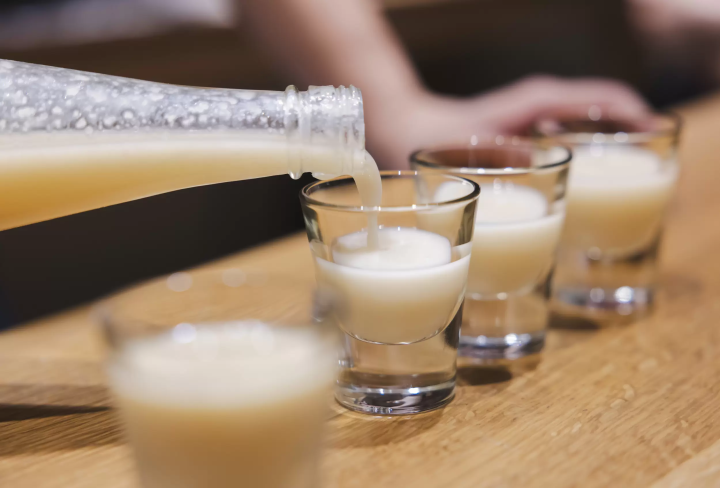
Doburoku is a traditional alcoholic beverage made from fermented rice with ancient origins. Unlike Japanese sake (nihonshu), which is a clear and refined drink, doburoku is cloudy and has a more rustic, full-bodied flavor.
In the 19th century, the homebrewing of doburoku became so widespread that the Japanese government, seeking to control and tax alcohol production, declared it illegal in 1899. To this day, only breweries with a specific license are permitted to produce and sell it for consumption. This licensing requirement is what makes doburoku considerably rarer than sake.
While doburoku is often referred to as “unfiltered sake,” our visit to Happy Taro Brewery revealed a more complex reality. The crucial difference between the two lies in the type of koji mold used during the fermentation process, which determines the final flavor and texture of the beverage.
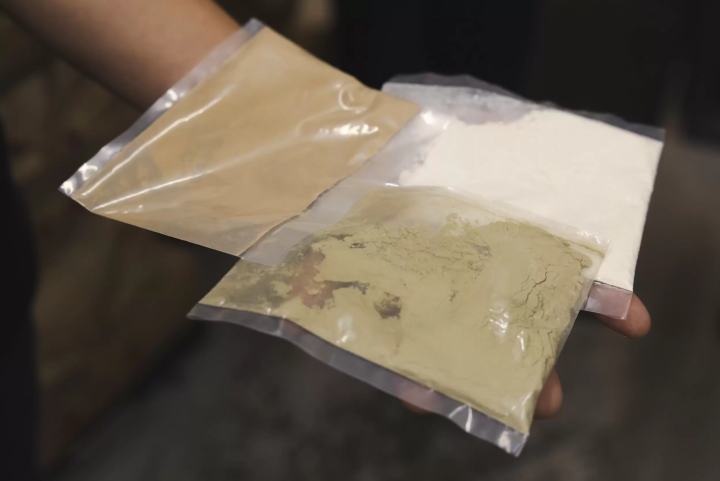
There are various types of koji mold, each cultivated differently to produce a specific result. Making sake requires koji created in a dry environment with carefully controlled temperature and humidity. In contrast, making cloudy products like doburoku, amazake, and miso requires a different type of koji mold, which is cultivated in a very humid environment, allowing it to adhere to steamed rice and grow rapidly.
In the words of Mr. Ikejima, making koji mold for doburoku or miso paste is "like a farmer's work, taking care of a paddy field." In contrast, he says, making koji for sake is "more like an artisan's work, where everything is calculated with precision." So the trick for doburoku and miso is to essentially let nature take its course—to not interfere, or to interfere only to an appropriate degree.
This key insight into the different types of koji mold instantly deepened our understanding of fermentation.
How to Enjoy Your Visit: Brewery Tours and Hands-on Workshops
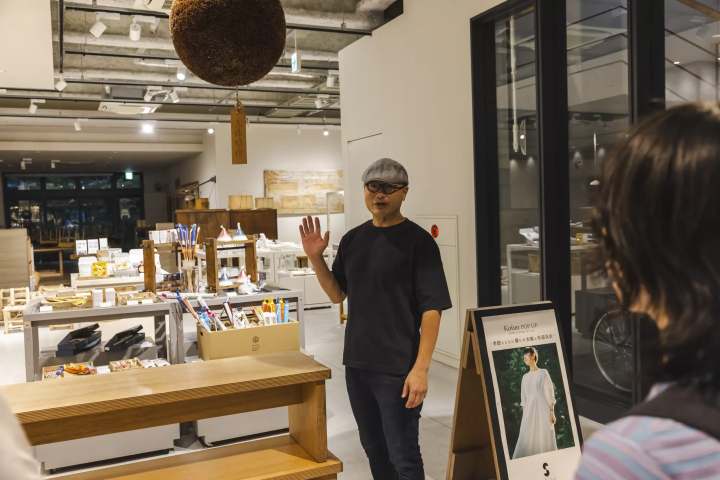
Happy Taro Brewery is a great place to understand fermentation and how it transforms ingredients, expanding their nutritional value. This process was essential to Japanese food culture from ancient times, creating a wide range of flavors from a limited number of ingredients like rice, soybeans, red beans, and seafood.
During a 90-minute brewery tour guided by Mr. Ikejima, you'll learn about the role of both Lake Biwa and the nearby Mount Ibukiyama in shaping Shiga's food culture. As an ancient lake, Lake Biwa is home to fish species found nowhere else. The calcium-rich underground water from Mount Ibukiyama, on the other hand, is ideal for fermentation and alcoholic beverages like doburoku.
During the tour, Mr. Ikejima will also introduce the unique concept of Umi no Schole, the facility that houses the brewery. He will explain how this "treasure trove of fermented foods" works and how Happy Taro Brewery fits into its overall mission.
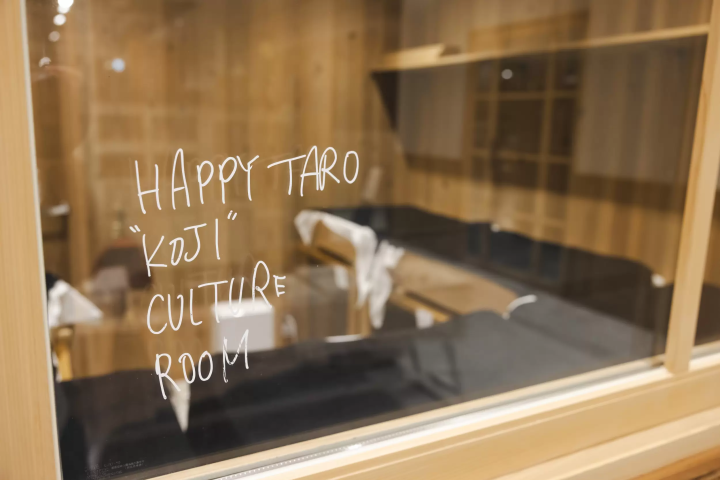
The second half of the tour focuses on different types of koji mold—from those used for miso paste to those for amazake and doburoku.
For example, the greenish mold is high-quality, but it gives ingredients a mushroom-like smell that can be an acquired taste. In contrast, the whitish mold has no smell, resulting in products like miso and amazake that are easy for everyone, even children, to enjoy. As Mr. Ikejima explains, “Selecting the type of mold based on who will enjoy the final product was the key to our success.”
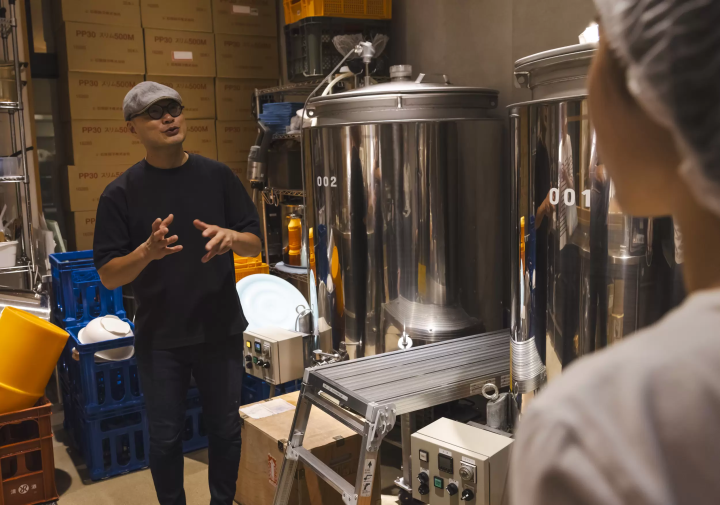
Tour participants will be able to access areas that are usually off-limits, the space with the fermentation tanks.

Depending on the fermentation stage, you might even get a peek inside the tanks to see the koji bacteria at work, bubbling and transforming rice and water into a new substance.
Unlike sake or miso types like Hatcho Miso, which require several months to ferment, the doburoku fermentation process only takes about 10 days. This allows the brewery to prepare new batches of fresh products very quickly.
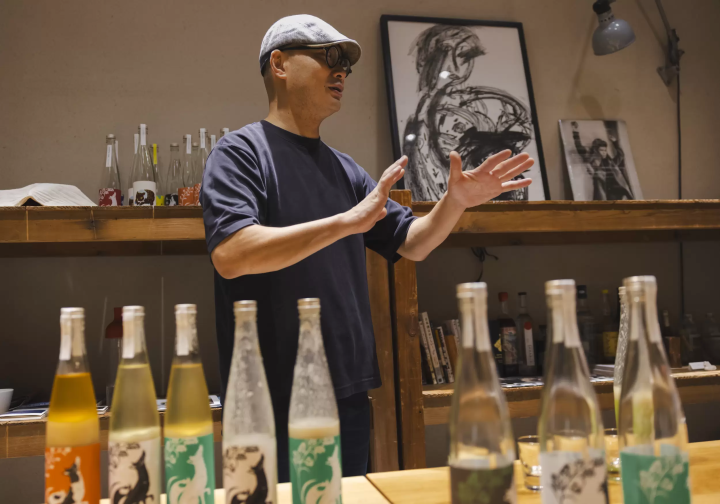
Lastly, adult participants get to taste three types of craft doburoku, while children can enjoy non-alcoholic amazake.
The variety of flavors in doburoku is astonishing! With additions like herbs, spices, cacao, and fruit, this beverage offers endless possibilities. The alcohol content varies by type, ranging from a high of 15% (similar to Japanese sake) to a low of 5% (like beer). Mr. Ikejima will also offer tips on which cuisines pair best with each doburoku, helping you find a type you'll love to take home as a souvenir.
Happy Taro Brewery also hosts workshops for making homemade miso paste, as well as other events themed around fermentation.
Craft Doburoku Varieties to Try at Happy Taro Brewery
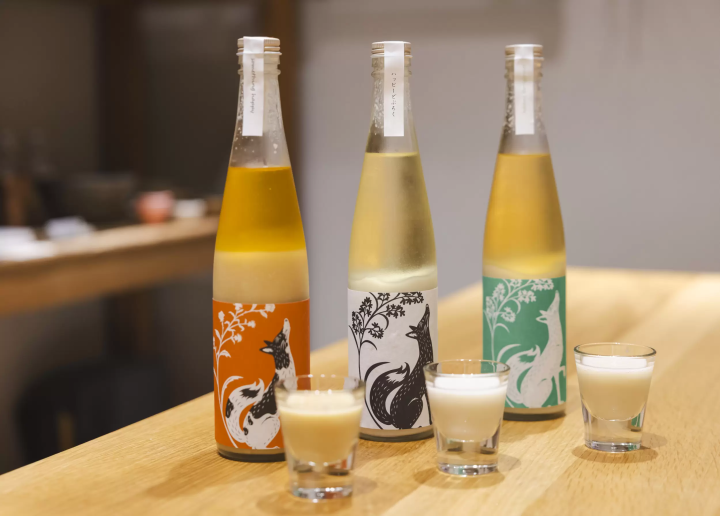
The bottles of Happy Taro’s craft doburoku have different colored labels to match each flavor, but they all feature the same logo. The logo is inspired by a local legend about a shape-shifting kitsune, a guardian deity of rice paddies and crops. Each label was designed by the kirie (paper-cutting) artist Teppei Hayakawa.
One of the most popular craft doburoku products made by Happy Taro Brewery is the Ukiuki Hop. Flavored with hops, it has a refreshing, grapefruit-like taste and a beer-like aftertaste. With an alcohol content of 6-8%, this beverage is perfect for casual drinking.
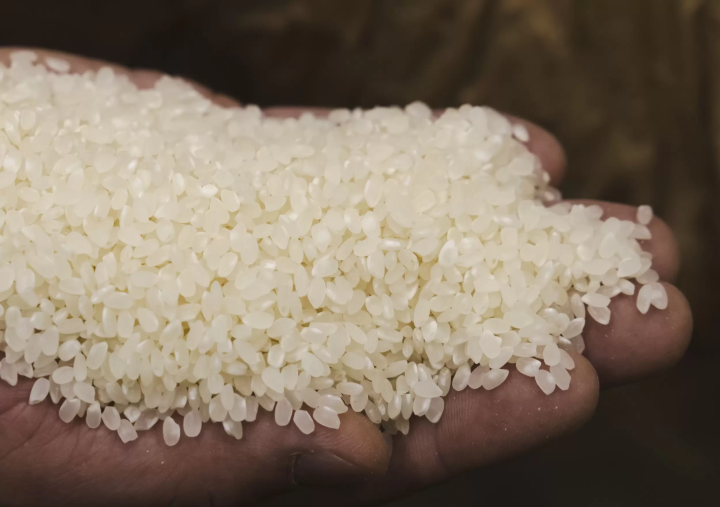
Another standard flavor is Happy Doburoku, which has an aroma similar to Japanese sake. It is made with only organic rice and underground water from Mount Ibuki. This beverage is fermented at a low temperature using koji mold for miso, which gives it a rich taste. With an alcohol content of 11-13%, this doburoku is best served atsukan-style, where the container is heated in hot water. According to Mr. Ikejima, it pairs very well with funazushi, a local specialty of fermented sushi with crucian carp from Lake Biwa.
A more unique flavor is the Otowa no Kuromoji doburoku. It gets its refreshing fragrance from kuromoji, a fragrant wood native to Japan. The kuromoji leaves are sourced from the Otowa Forest, which is home to the headwaters of Lake Biwa. This brew carries the scent of the forest and pairs wonderfully with Japanese cuisine.
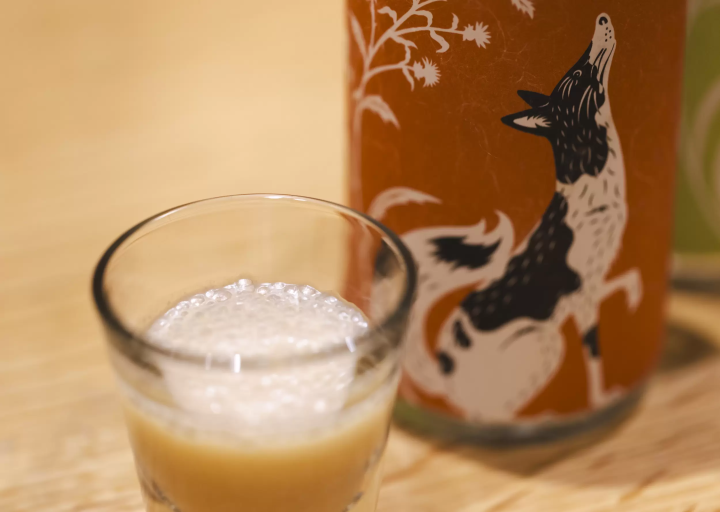
Oriental Whey offers a complex flavor profile created from a mix of spices, including safflower and rose. Fresh Herb Tea is another unique option, made with a blend of herbs from Mount Ibuki, a place well-known for medicinal herbs. Both of these flavors will leave a lasting impression.
With such a wide variety of flavors, there is a doburoku for every taste, so feel free to try any that catches your attention.
*Please remember that doburoku requires refrigeration. For this reason, we recommend purchasing it at the end of your trip so you can store it in a fridge as soon as possible.
On an additional note, Shiga's fermentation culture is not confined to the prefecture itself but also has deep ties with neighboring prefectures. For instance, at Sawada Shuzo, a sake brewery in Tokoname, Aichi Prefecture, which we previously visited, the winds blowing down from Mount Ibuki play an essential role in sake brewing. Even in a distant area, the natural bounty of Mount Ibuki is being leveraged in the sake production. When we focus on this 'chain of fermentation culture that crosses prefectural borders,' we can feel even more strongly the breadth and depth of the food culture of the Lake Biwa area.
Summary
Happy Taro Brewery, located within Nagahama's fermentation hub, Umi no Schole, offers a unique opportunity to experience doburoku, a rare Japanese alcoholic beverage.
The brewery's craft doburoku comes in various flavors inspired by the natural environment, from Lake Biwa in the west to Mount Ibuki in the east. Each brew tells a story, carrying the unique flavors and cultural roots shaped by the geography and climate of the Lake Biwa area.
You can reach Umi no Schole in less than 10 minutes on foot from Nagahama Station. From Nagoya, Nagahama is about a 45-minute ride away, accessible via the Shinkansen with a transfer to local train lines at Maibara Station.
The contents on this page may partially contain automatic translation.

